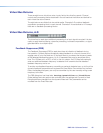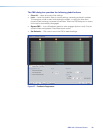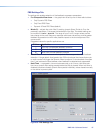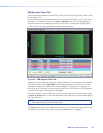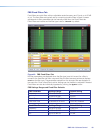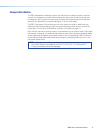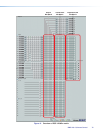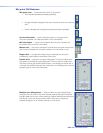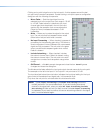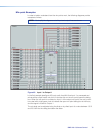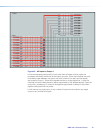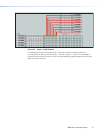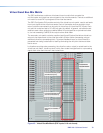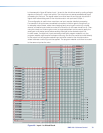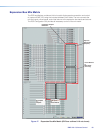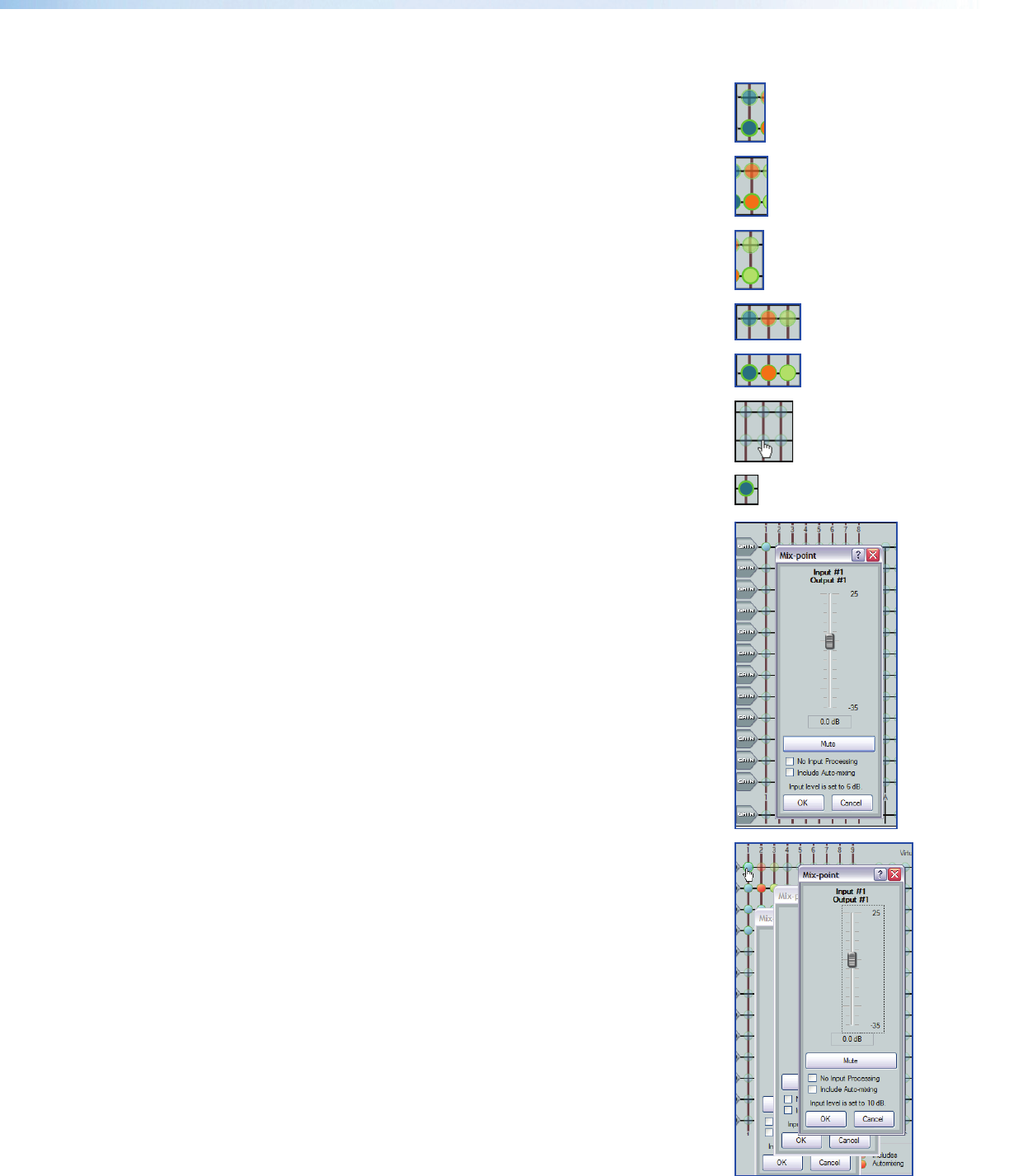
Mix-point GUI Behavior:
Mix-point color — There are three colors of mix-points:
• Teal indicates standard processing (default),
• Orange indicates the signal chain also includes an auto-mix channel
and,
• Green indicates that all signal processing has been bypassed.
No mix information — a faint circle (teal, green, or orange) on the
mix-point indicates it is muted (contains no mix information).
Mix information — a solid circle indicates the mix-point contains mix
information (the mix-point is unmuted).
Mouse-over — the cursor changes to a hand when a mouse-over occurs
at a mix-point whether the mix-point contains mix information or not.
Single-click — a single click brings focus to (selects) the mix-point,
indicated by a dark green outline around the circle.
Double-click — opens the mix-point dialog box. The focus outline turns
light green to indicate the open dialog box. If the mix-point is muted, the
mix-point circle is gray and the Mute button in the dialog box will be red. If
unmuted, the bubble is teal and the mute button in the dialog box is normal
(typically gray for most color schemes).
Multiple open dialog boxes — When multiple mix-point dialog boxes
are open, the mix-point for the most recently opened dialog box receives
the light green focus circle, while previously opened dialog boxes relinquish
their focus. Focus can be returned by either clicking on a previously
opened dialog box, or by double-clicking on a mix-point.
DMP128 • Software Control 73



